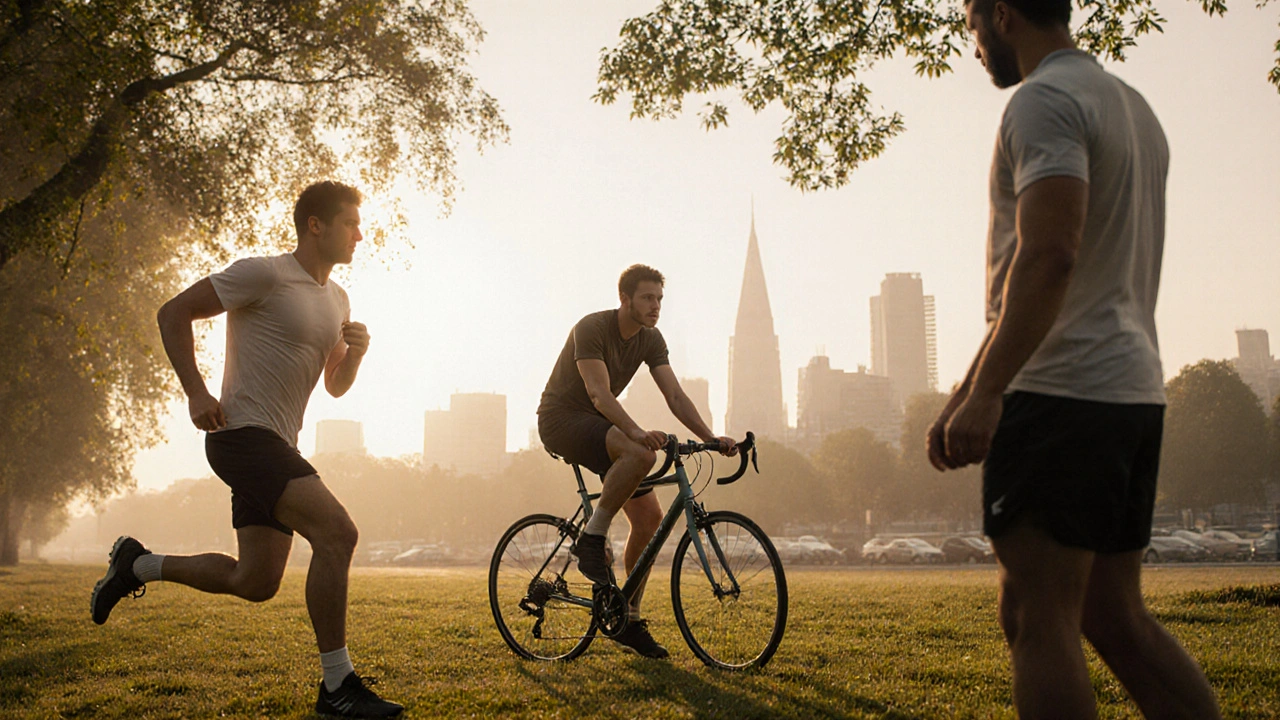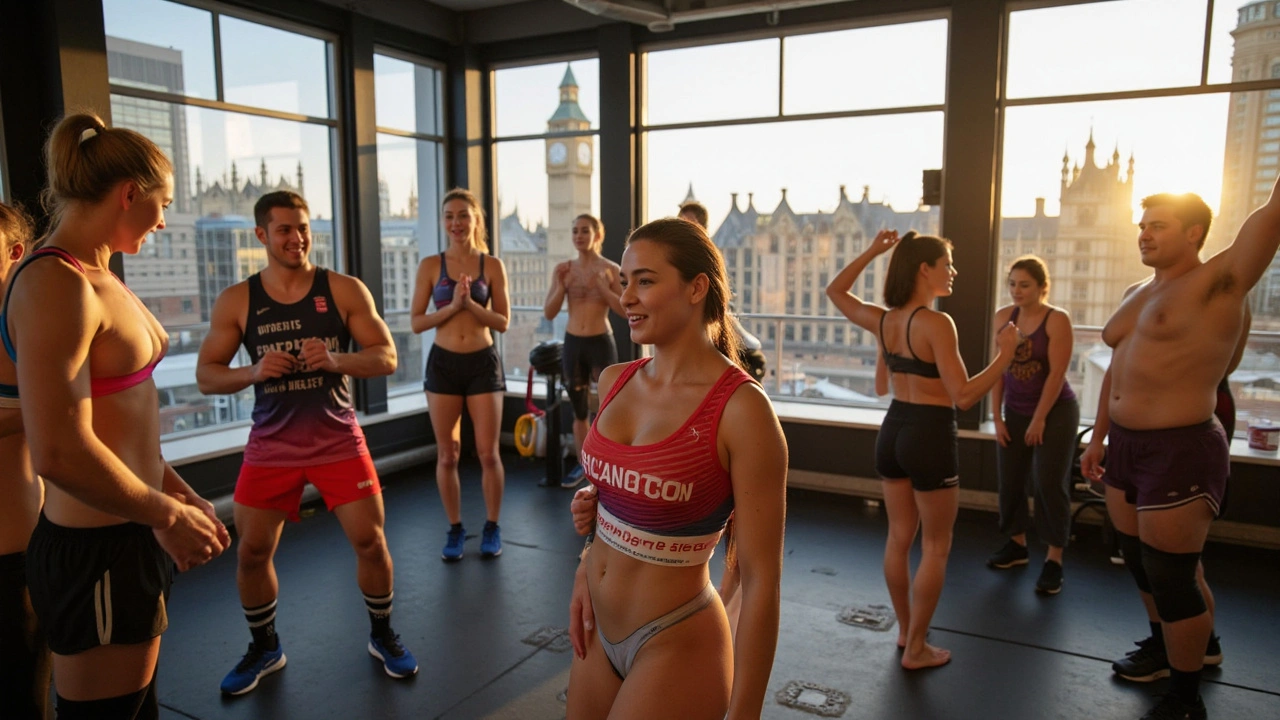Sports Massage in London: A Beginner’s Guide to Recovery, Performance, and Local Clinics
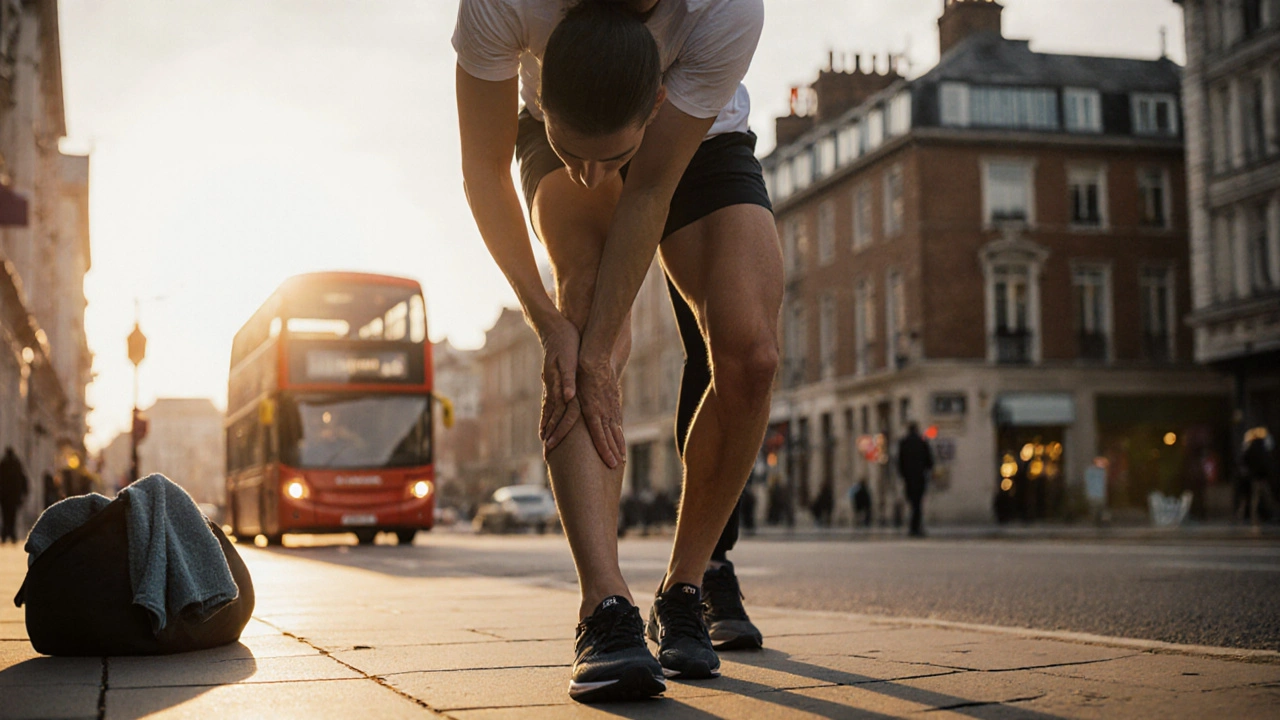
If you’ve ever pushed through a tough run only to feel like your muscles are made of concrete the next day, you’re not alone. Thousands of runners, cyclists, gym-goers, and weekend warriors in London rely on sports massage to bounce back faster, move better, and stay injury-free. But if you’ve never had one - or you’re not sure if it’s just for elite athletes - this guide cuts through the noise. No fluff. Just what you actually need to know as a beginner in London.
What Is Sports Massage, Really?
Sports massage isn’t a fancy spa treatment. It’s targeted, hands-on therapy designed for people who move a lot. Think of it as tuning up your body like a car engine - not just to feel good, but to keep it running smoothly under stress.
Unlike Swedish massage, which focuses on relaxation, sports massage uses deeper pressure, specific techniques like trigger point release and myofascial release, and is timed around your training schedule. It targets muscles used most in your sport - hamstrings for runners, shoulders for swimmers, hips for cyclists.
Studies from the Journal of Athletic Training show that athletes who get regular sports massage report 30% less muscle soreness and recover 20% faster after intense sessions. That’s not magic. That’s science.
Why Londoners Are Turning to Sports Massage
London is packed with active people. From the 40,000 runners in the London Marathon every year to the thousands who hit the gym after work or cycle to the office, muscle fatigue is common. Many don’t realize their tight hips or stiff shoulders aren’t just "normal aging" - they’re signs of overuse.
Clubs like Runners World London and local triathlon groups now recommend sports massage as standard recovery. Even corporate gyms like PureGym and Anytime Fitness partner with local therapists to offer discounted sessions for members.
And it’s not just for pros. If you’re doing HIIT three times a week, hiking on weekends, or just trying to keep up with your kids after a long day, sports massage helps you stay active without constant aches.
What to Expect in Your First Session
Your first session doesn’t have to be intimidating. Here’s what actually happens:
- You’ll fill out a quick form - your sport, training schedule, injuries, and any pain points.
- The therapist will do a quick movement check - maybe ask you to squat or reach overhead to see where you’re stiff.
- They’ll use oil or lotion and work on specific areas - usually legs, back, shoulders, or hips - depending on your activity.
- There might be some discomfort, but it shouldn’t hurt. If it does, speak up. Good therapists adjust pressure on the spot.
- You’ll get advice on stretches or foam rolling to do at home.
Most sessions last 30 to 60 minutes. Wear shorts and a tank top - you’ll be draped with towels, but you need access to your muscles. No nudity required.
Afterward, you might feel a little sore for 24 hours - like a good workout. Drink water. Move gently. Don’t jump into another intense session right away.
When to Get a Sports Massage
Timing matters. Getting one at the wrong time can do more harm than good.
- Before training: Light massage 24-48 hours before a big event helps loosen muscles without overstimulating them. Avoid deep work right before a race or game.
- After training: Best time. Within 24 hours of a hard session, massage reduces inflammation and speeds up muscle repair.
- During training: Weekly or bi-weekly sessions help prevent buildup of tension. Many runners in London do this during marathon training.
- For recovery: If you’re sore for more than 3 days, it’s time. Chronic tightness leads to injuries.
Pro tip: Don’t wait until you’re injured. Prevention is cheaper, faster, and way less painful.
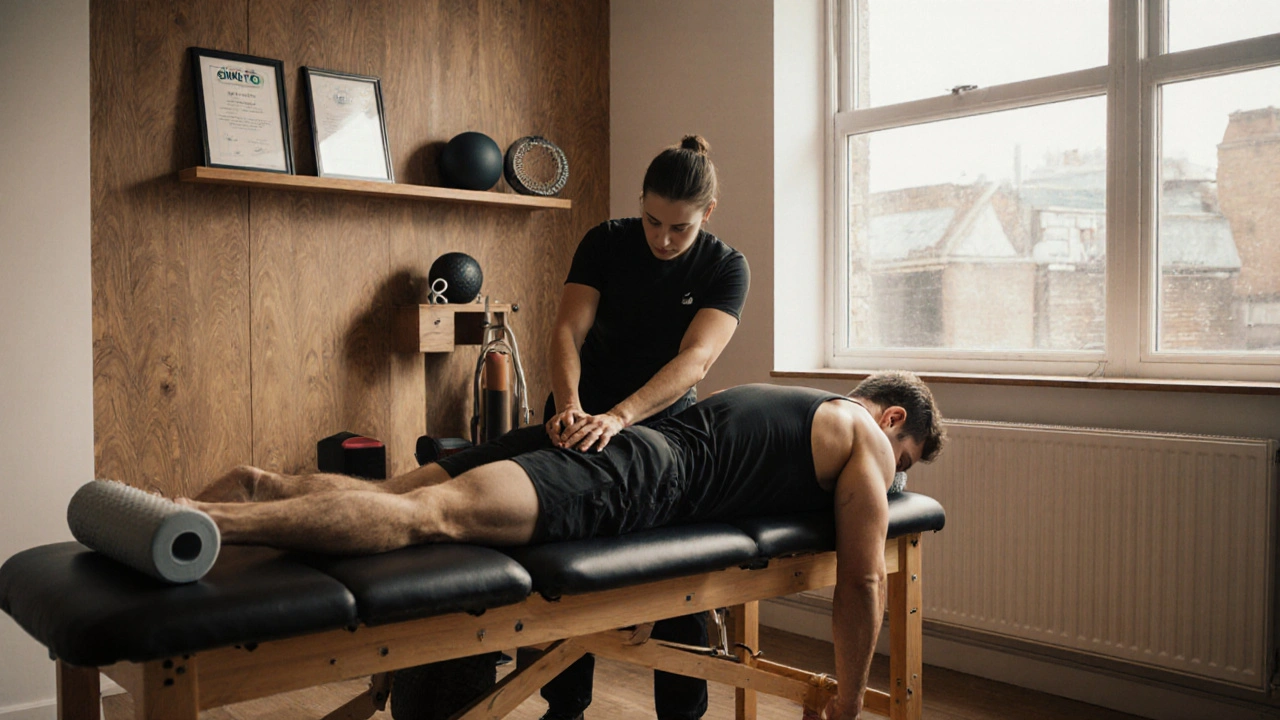
How Often Should You Get One?
There’s no one-size-fits-all answer. It depends on your activity level.
- Beginner (2-3 workouts a week): Every 3-4 weeks
- Regular (4-5 workouts a week): Every 2 weeks
- Competitive or training for an event: Weekly or bi-weekly
- Recovering from injury: As advised by your therapist - often twice a week at first
Many Londoners start with a single session to test it out, then commit to a monthly package. Clinics like Active Recovery London and Therapy in Motion offer 5-session bundles at 20% off.
Where to Find a Good Sports Massage Therapist in London
Not all massage therapists are trained for sports. Look for these credentials:
- Registered with the Complementary and Natural Healthcare Council (CNHC)
- Hold a Level 4 Diploma in Sports Massage Therapy
- Have experience working with runners, cyclists, or gym-goers (ask for examples)
Here are three trusted spots across London:
- Active Recovery London (Islington): Specializes in runners. Offers post-race recovery clinics. Open weekends.
- Therapy in Motion (Clapham): Focuses on gym-goers and CrossFit athletes. Free 15-minute consultation.
- London Sports Physio & Massage (Wandsworth): Run by a former pro cyclist. Works with NHS physios. Great for injury rehab.
Check Google reviews - look for mentions of "sports-specific," "understands training load," or "didn’t make me sore afterward." Avoid places that only advertise "relaxation" or "romantic couples massage." Those aren’t for you.
What It Costs in 2025
Prices vary by location and therapist experience, but here’s what you’ll pay in London right now:
| Session Length | Price Range | Best For |
|---|---|---|
| 30 minutes | £40-£55 | Quick tune-up, focused area |
| 60 minutes | £65-£85 | Full body, regular maintenance |
| 90 minutes | £95-£120 | Recovery after events, injury rehab |
Some clinics offer discounts for students, NHS staff, or package deals. Always ask. A 5-session bundle can drop the per-session cost to under £60.
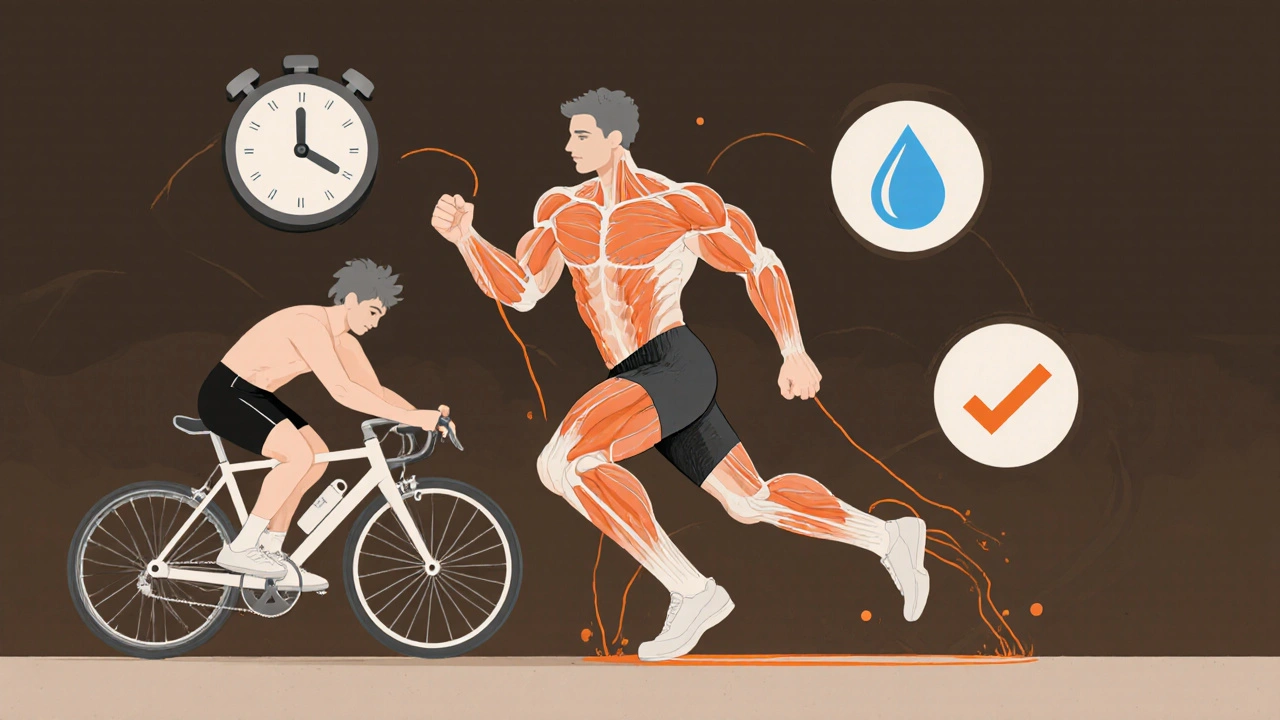
What to Avoid
Here are common beginner mistakes:
- Getting a deep massage right before a race - you’ll feel heavy and sore.
- Skipping hydration afterward - your muscles need water to flush out waste.
- Waiting until you’re in pain - by then, you’re already injured.
- Choosing the cheapest option without checking qualifications - bad technique can cause damage.
- Expecting instant miracles - recovery takes time. One session won’t fix months of tightness.
Also, avoid spas that offer "sports massage" as a side service. Look for places that specialize in it. Their tools, techniques, and mindset are different.
Can You Do It Yourself?
Tools like foam rollers, lacrosse balls, and massage guns help - and you should use them. But they’re not replacements for a trained therapist.
A professional can feel subtle restrictions in your fascia, identify imbalances you can’t see, and apply pressure exactly where it’s needed. A foam roller can’t tell if your IT band is tight because of weak glutes or poor running form.
Think of self-care as maintenance. Professional massage is the tune-up.
What Comes Next?
Once you start sports massage, you’ll notice things you didn’t before: your stride feels smoother, your shoulders don’t ache after typing, your sleep improves. It’s not just about pain relief - it’s about moving better every day.
Many people start with one session and end up booking monthly. It becomes part of their routine - like brushing teeth or stretching before bed.
If you’re active in London, you owe it to your body to try it. You don’t need to be an athlete. You just need to want to keep moving without pain.
Is sports massage painful?
It can feel intense, especially in tight areas, but it shouldn’t be unbearable. A good therapist will check in with you and adjust pressure. If it hurts too much, speak up. Pain isn’t progress - it’s a warning sign.
Can sports massage help with back pain?
Yes, if the pain comes from muscle tension, not nerve damage or spinal issues. Many Londoners with lower back pain from sitting all day find relief through sports massage targeting the hips, glutes, and hamstrings - the real culprits behind "back pain." Always get a proper diagnosis first if pain is sharp or radiating.
Do I need a referral from my doctor?
No. Sports massage is a self-referral service. But if you have a diagnosed injury, diabetes, or are pregnant, tell your therapist. They’ll adjust the treatment accordingly. Some GPs in London even prescribe massage as part of physiotherapy plans.
How long does it take to see results?
Most people feel looser after one session. For lasting changes - like improved range of motion or reduced chronic tightness - it takes 4 to 6 sessions. Think of it like going to the gym: one workout won’t change your body, but consistent effort will.
Is sports massage covered by health insurance in the UK?
Private health insurance like Bupa or AXA sometimes covers sports massage if it’s prescribed by a physiotherapist or for injury rehab. Standard NHS care doesn’t cover it. Always check your policy - some plans include it under "complementary therapies."
If you’re ready to try it, book your first session. Don’t wait until you’re injured. Your body will thank you - and you’ll be back out there, moving better than before.

